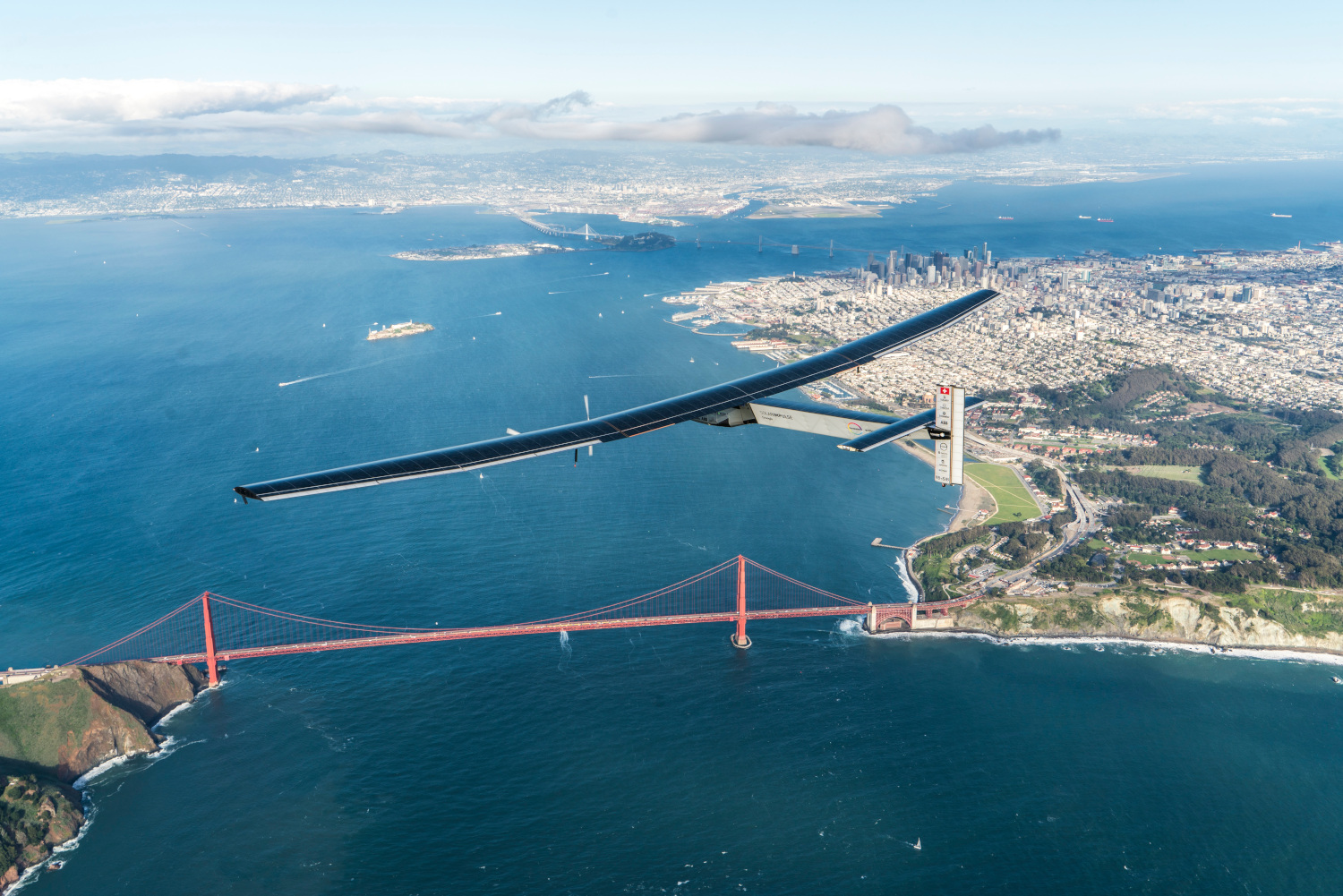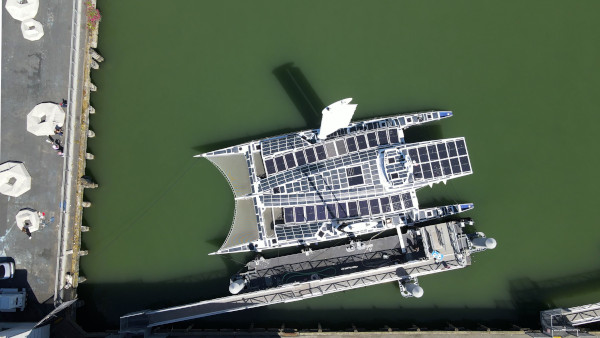
Missing flights
When will electric aviation take off?
As a photographer, I adore the aerial perspective. So much so, I thought it’d be cool to learn how to fly. When I finally got my private pilot license, though, I stopped flying. As a student pilot, I took a dozen photos with my iPhone and realized I’d need a lot more practice to get good enough to fly and shoot at the same time. The environmentalist in me overrode my aerial ambition. I couldn’t justify the carbon emissions.
In fact, I’ve since curtailed all my flying in an effort to reduce my personal carbon footprint. Although aviation accounts for only about 2.6% of the world’s total greenhouse gas emissions, a couple of round-trip, cross-country flights to conferences would add up to roughly 40% of my annual contribution to the climate crisis. I haven’t flown now for five years. I miss it. With all the electric cars now on the roads, I wondered, is aviation far behind?
In my pilot training, I learned about the four forces of flight: lift, weight, thrust, and drag. Versus driving, flying has a tricky extra problem to solve—lift. A Tesla Model X weighs 2,458 kg. The extra heft from batteries provides stability. But that kind of excess weight grounds flight. What’s required for lots of people to fly electric? Technically, three things, each of which poses its own daunting challenges: light-weight parts, robust, efficient power for propulsion, and an energy-dense source for that power.
Green flight, for one, has been done. During my flight training, I followed the adventures of a Swiss team flying the Solar Impulse, an experimental, solar-powered plane. Solar cells—17,248 of them—covered its wings. Efficient electric motors provided thrust. Onboard batteries stored energy for night flight. The albatross-like plane had a wingspan of a 747 but weighed less than the Tesla. In 2016, it circumnavigated the planet, a breathless press covering each step. But Solar Impulse carried only a solo pilot, plodding along at an average air speed of 75 km/h. The exploit certainly raised awareness. But providing a viable, carbon-neutral alternative to today’s carbon-spewing aviation sector? Not so much.
Going for it
The Advanced Research Program Agency-Energy—ARPA-E for short—is, however, working on that, and so is UC Santa Cruz professor of electrical and computer engineering Leila Parsa. A U.S. Department of Energy agency, ARPA-E funds research and development on ambitious energy technology that’s too early to attract private-sector investment. “We focus on relevant problems that reach the national scale,” said ARPA-E program director, Peter de Bock. Since almost half of our domestic aviation emissions come from regional flights of 600 miles or less, ARPA-E has set its sights on decarbonizing an aircraft similar in size and capability to a Boeing 737.
As part of this effort, the agency’s program “ASCEND” (Aviation-class Synergistically Cooled Electric-motors with iNtegrated Drives) has challenged engineers to design an electric powertrain that converts electricity into propulsion with a “power density” greater than 12 kW/kg, an ambitious goal. Power density measures the maximum power output (kW) by component weight (kg), a critical concern due to that extra force—lift—that flight needs to deal with.
Parsa leads one of nine teams funded to work on ASCEND. Her team is designing an innovative integration of three main components—a drive that converts DC voltage into variable frequency AC voltages, which feeds a highly efficient electric motor that turns electrical energy into mechanical work, and a way to keep the whole apparatus from overheating. “When you’re pushing that much current, you need to keep it cool,” Parsa said. Their design also includes a super-conducting coil, which requires extremely low temperatures, making thermal management a critical component. On this part of the project, Parsa is relying on her Air Force Research Lab partners at the Wright-Patterson Air Force Base in Ohio to provide their expertise. If Parsa and her collaborators are successful, their system will deliver significantly more power density than anything available today.
Heavy, man
But batteries are not feathers. As opposed to power density, “energy density” is a measure of how much power a fuel source can provide over time, expressed as kW per hour per kg (kW-h/kg). Jet fuel is quite energy dense, about 60 times more so, kg for kg, than the best batteries. That’s hard to give up. But conventional internal combustion engines are only about 35% efficient, wasting the rest as heat, noise, and vibration. ARPA-E currently isn’t envisioning a battery-operated 737, but a series hybrid one. “A turbine will convert some kind of fuel into electricity, and then the part we’re working on will convert that electricity into propulsion,” said Keith Corzine, professor of electrical and computer engineering and a member of Parsa’s UCSC team. “The big advantage is efficiency.”
Coupling the energy density of a liquid fuel to the improved efficiency of souped-up power-dense electric powertrains like the ones Parsa and others are designing seems to be ARPA-E’s plan. A concurrent parallel program to ASCEND is “REEACH” (Range Extenders for Electric Aviation with low Carbon and High efficiency), which—along with confirming ARPA-E’s fondness for acronyms—is looking for economical, carbon-neutral methods to convert energy-dense liquid fuels into electricity to hand off to those efficient electric powertrains. If the results of these efforts aren’t immediately applicable to large commercial aircraft, the technology might sooner find use in more efficiently electrifying other modes of transportation, like ships, trains—or, say, much smaller, short-hop air taxis.
Above it all
The dream of flying up and over teeth-grinding, stop-and-go commuter traffic in urban areas has long captured the imagination (see sidebar). Recently, this dream has also captured large amounts of capital investment. Several companies have developed “eVTOL” (electric Vertical Take-Off and Landing) prototypes for intended use as air taxis, tapping current battery technology, because they don’t need to lift much or go very far. In February 2021, two such companies, Archer Aviation and Joby Aviation, both announced plans to go public—at eye-popping valuations of $3.8 billion and $6.6 billion, respectively. Electric air taxis are expected to run cleaner, much more quietly, less expensively, and potentially more safely than helicopters. The latter, however, remains to be judged by the stern arbiter of U.S. aviation safety—the Federal Aviation Administration (FAA).

Extremely serious about its mandate to ensure safety, the FAA rules U.S. airspace, enforcing rigorous standards for certifying new aircraft. While experimental planes like the Solar Impulse face a lower hurdle, any aircraft intended to fly commercial passengers over populated areas receives strict scrutiny. In a talk at the CAFE (Comparative Aircraft Flight Efficiency) Foundation’s 2019 Electric Airplane Symposium in Oshkosh, WI, Earl Lawrence, the FAA’s executive director of aircraft certification, urged patience while awaiting the future: “We have titanium silos—aircraft certification, flight standards, air traffic, airports, and we don’t talk to each other very well. New tech needs to mitigate risks in all these areas.”

Me? I’m not holding my breath. I’ll continue to be mindful about flying for the foreseeable future. The pandemic forced a lot of conferences to go virtual, which has helped all of us reduce our carbon footprints. And while current technology may be good enough for short-hop eVTOLs, ironing out certification and other FAA safety considerations will take time and may disappoint those eager to hop onboard (and the investors who already have). In the meantime, though, there is one electric aircraft that has changed my world, a mini-miracle that became affordable just as I finished my pilot training. With my camera drone, I can take the most amazing aerial shots without ever leaving the ground.

